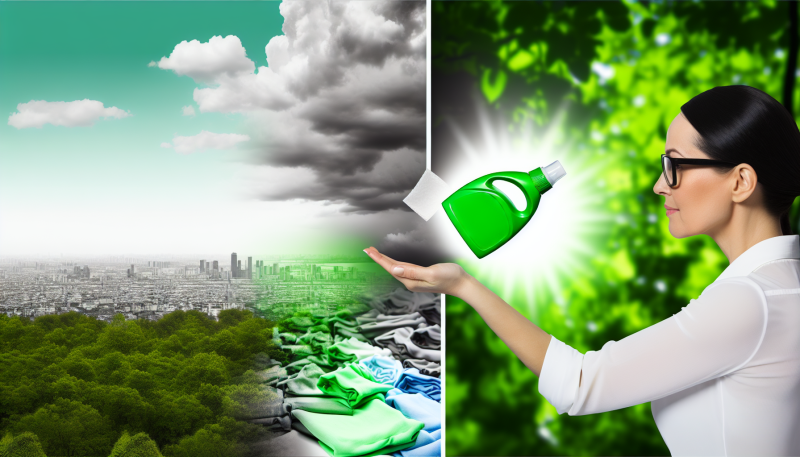Can Eco Cleaning Products Kill Germs and Bacteria Effectively?
As awareness grows about the environmental impact of household products, more people are turning to eco-friendly cleaning alternatives. But an important question remains: Can eco cleaning products effectively kill germs and bacteria? Let’s explore the science, effectiveness, and myths surrounding green cleaners.
What Are Eco Cleaning Products?
Eco-friendly cleaning products (also called green cleaners or natural disinfectants) are made from biodegradable, non-toxic, and sustainable ingredients. They often avoid:
-
Harsh chemicals like bleach or ammonia
-
Artificial fragrances and dyes
-
Petroleum-based solvents
-
Phosphates or phthalates
Common ingredients in eco cleaners include vinegar, citric acid, hydrogen peroxide, essential oils, and plant-based surfactants.
How Do Germs and Bacteria Spread?
Bacteria and viruses spread through surfaces, air, bodily fluids, food, and water. Common "hot spots" include:
-
Kitchen counters and sponges
-
Bathroom surfaces
-
Doorknobs and handles
-
Electronic devices
Disinfecting these areas is crucial to prevent illness, especially during cold, flu, and outbreak seasons.
Can Green Cleaners Kill Germs Effectively?
Yes—some eco cleaning products can kill germs and bacteria, but not all are disinfectants. Here’s what you need to know:
1. Natural Ingredients With Antibacterial Properties
Certain natural ingredients are scientifically proven to kill microbes:
-
Vinegar (acetic acid): Can kill some bacteria like E. coli, but not viruses like flu or COVID-19.
-
Hydrogen Peroxide (3% solution): Highly effective against bacteria, fungi, and viruses.
-
Ethanol (alcohol): At 60%+ concentrations, can kill most pathogens.
-
Essential oils (e.g., tea tree, eucalyptus, thyme): Show antimicrobial properties, though less studied than traditional disinfectants.
2. EPA-Registered Green Disinfectants
For true disinfection, look for EPA-approved products. The U.S. Environmental Protection Agency (EPA) maintains a list of registered disinfectants, including some eco-friendly options (e.g., those containing thymol or hydrogen peroxide).
Eco vs. Traditional Disinfectants: A Comparison
| Feature | Eco Cleaners | Traditional Disinfectants |
|---|---|---|
| Ingredients | Natural, biodegradable | Chemical-based (bleach, ammonia, etc.) |
| Germ-killing ability | Moderate to High (if EPA-approved) | High |
| Surface Safety | Safe for most surfaces | May damage delicate materials |
| Human Health Impact | Low toxicity, safer for kids/pets | Can cause skin/eye irritation, fumes |
| Environmental Impact | Low (biodegradable, no VOCs) | High (toxic runoff, air pollution) |
| Scent | Mild, essential oil-based | Strong, chemical-smelling |
Tips for Using Eco Products Effectively
To ensure your eco cleaning products are doing the job:
-
Check for EPA registration if you want a certified disinfectant.
-
Allow proper dwell time (typically 5–10 minutes) before wiping surfaces.
-
Clean before disinfecting—remove visible dirt, then apply disinfectant.
-
Store products properly to maintain potency.
-
Avoid DIY mistakes (e.g., mixing vinegar and hydrogen peroxide in the same container—it can be hazardous).
When to Use Traditional Disinfectants
While green products are suitable for everyday cleaning, there are situations where stronger disinfectants are necessary, such as:
-
During an infectious outbreak (like COVID-19)
-
When someone in the household is immunocompromised
-
In medical or food-preparation settings
In such cases, a hospital-grade or bleach-based product may be recommended temporarily.
Final Verdict:
Are Eco Products Enough?
Yes—when used correctly, many eco-friendly cleaning products can effectively kill bacteria and germs, especially those with EPA-registered active ingredients. However, not all green products are disinfectants by default. Always read labels and understand the product's intended use.
For daily home use, eco cleaners are a safe, effective, and environmentally responsible choice. For more demanding situations, combining green products with targeted use of stronger disinfectants can provide the best of both worlds.







